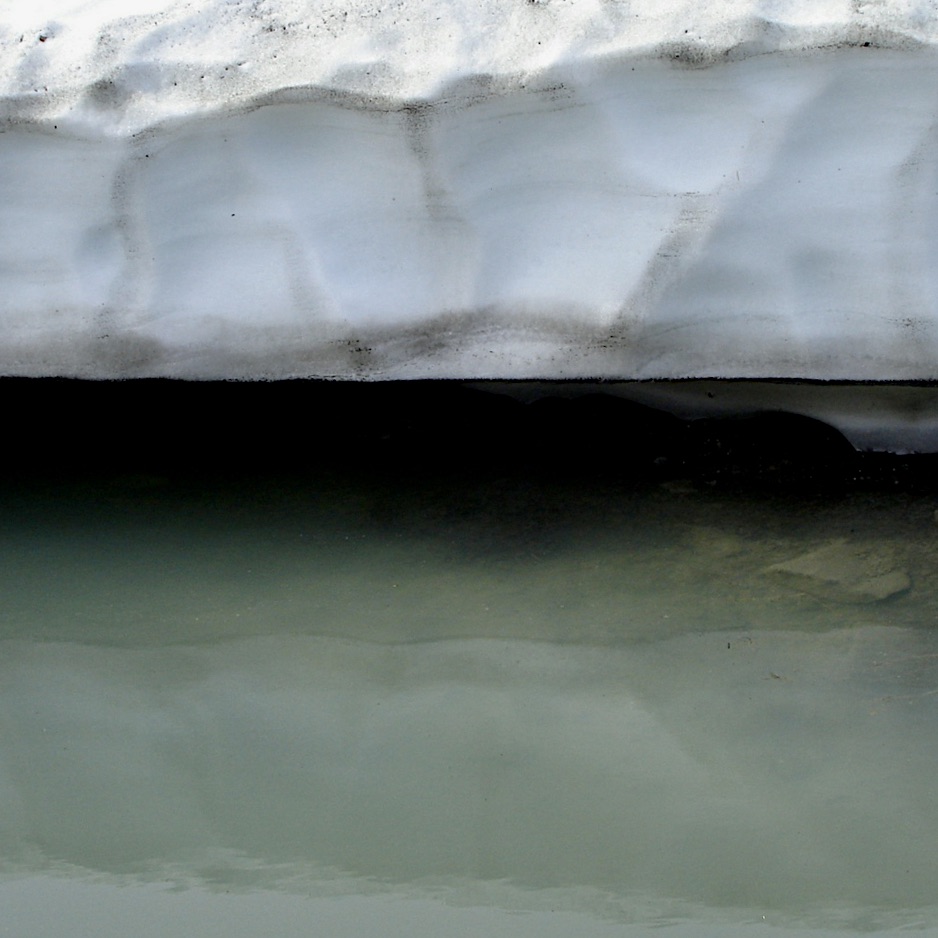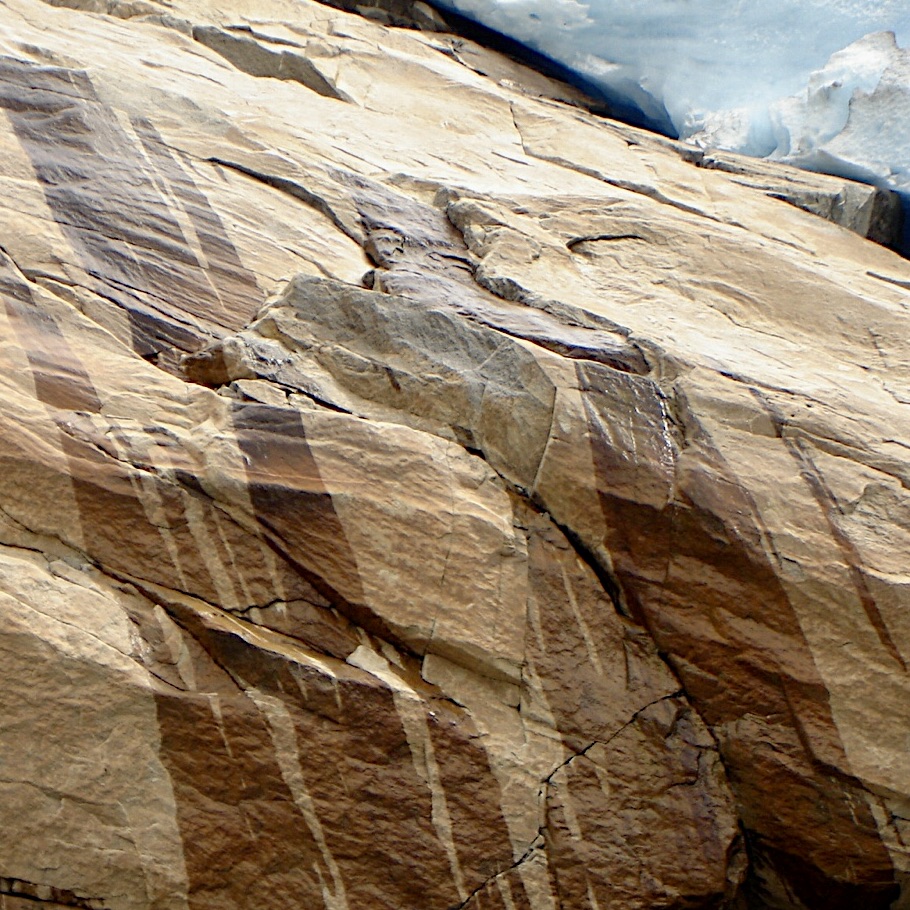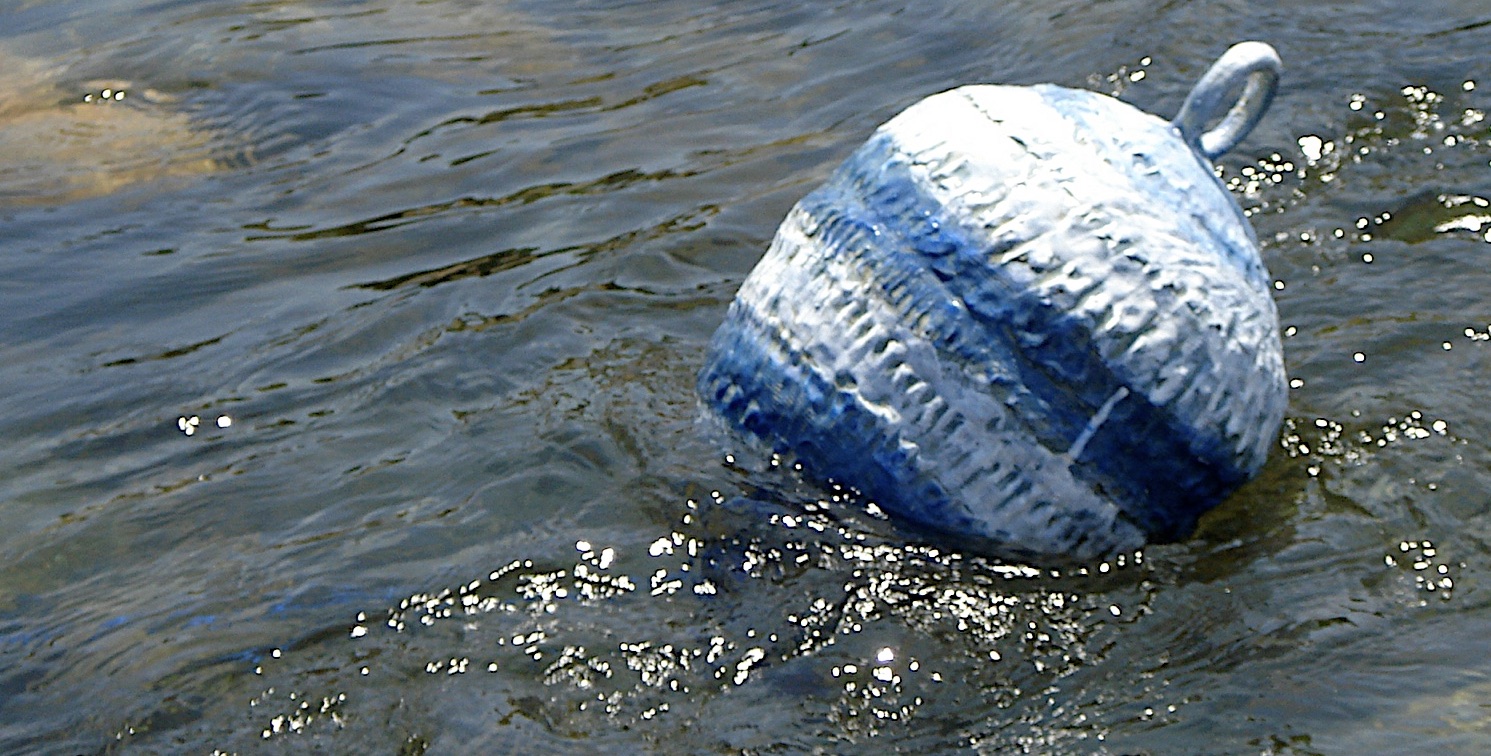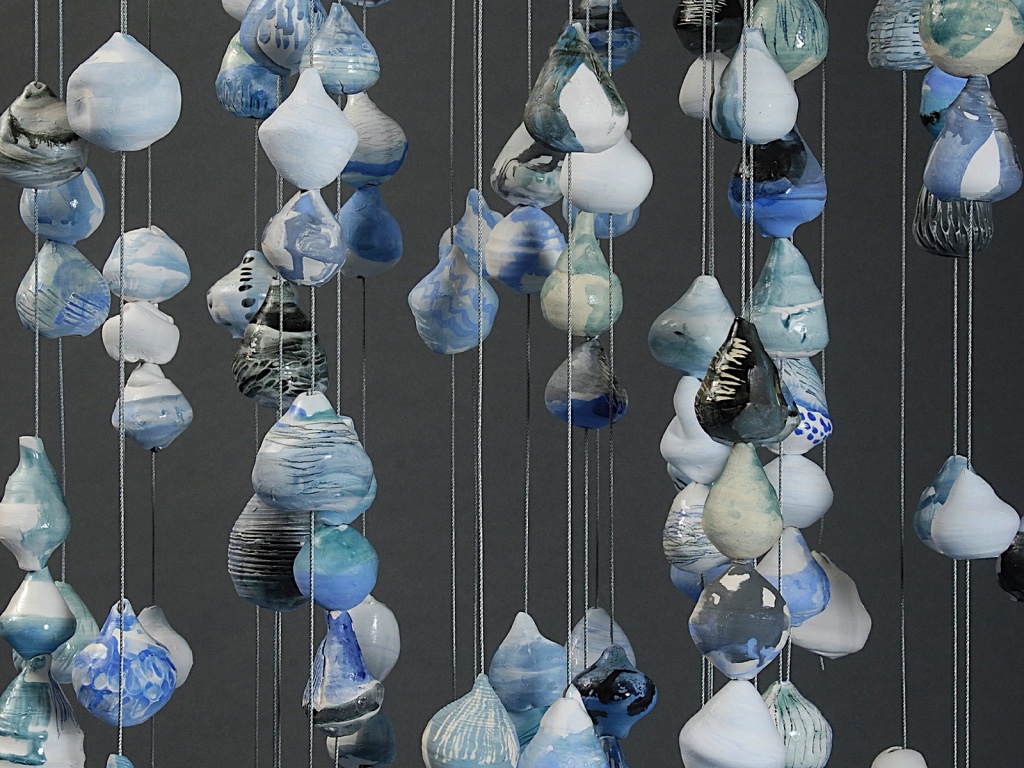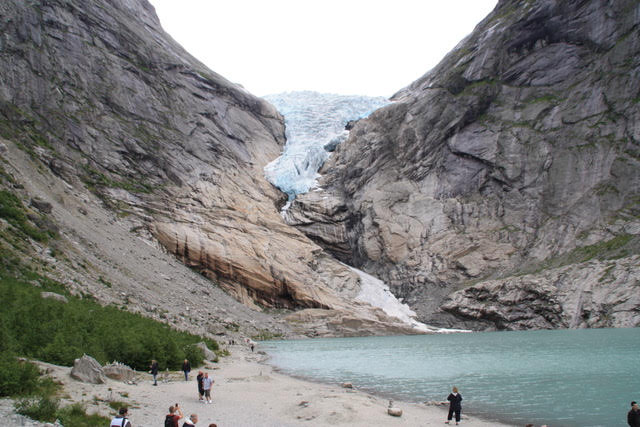Following Water: A Norwegian genesis, drop by drop
Following Water
“It’s an irony that writing about water is often so dry when the subject itself is so wet.”
Far below, a car ferry waits at the end of a Norwegian fiord. Imagine looking down at an ant from the edge of a cliff; that’s how far down and how steep. My cousin, a science teacher and glacier guide, has brought me here, after a visit to the nearest glacier to Stryn, the ancestral home of our grandmothers. I’d first met him at a family reunion there, in 2000. We’d visited Briksdal Glacier, the largest in Europe, and in 2006, he’d written that the glacier was melting, that “it wouldn’t last our lifetime.”
In 2007, he brought me to the top of this mountain, past layers of intricate geology stripped grey and white, chiseled to make a harrowing gravel road. He pointed to boulders. “Erosion starts with water, creeping into one tiny crack, freezing, expanding, forcing the crack wider every year, until a segment comes crashing down,” he explained.
July sun melted the snow. I watched a drop. Dripping. I imagined this drop joining other drops to make rivulets, to flow into streams, then rivers large enough to meander. I felt compelled to follow this imaginary drop.
My Imaginary Drop
My drop flows through a small, private hydroelectric plant that a clever cousin has developed. It floats past the farm where my grandmother was born. I see her there in dark winters, dangerous avalanches poised above.
My drop glides to Hjelle, more hotel than town, past a home of my ancestors. I slept in a wooden bed where generations had given birth, perched over the river. It was raining hard, and my cousin, who lived safely up the hill, pointed to a rock. “You don’t have to worry about flooding,” he said, “unless water covers that rock.”
My drop meets rivers coming from other glaciers, creating Oppstrynsvatnet Lake, and then narrows again as Stryn River. Wedged between river and mountains, on fertile land created by meanders, a cousin has a small grass farm to feed his milk cows. This river gets lost in a fjord, which in turn, becomes Nordfjord and then the sea, where a cousin fishes, and brings his catch home to make cod stew.
Drop by Drop
I came home enthralled by water, its past and future, and spent an entire year making work for an exhibition: paintings inspired by the glaciers, ceramic drops as sculpture, and ceramic buoys that I floated down the river.
What I am not. Not a water expert, a scientist nor historian, not a farmer or fisherman, and I don’t even like to swim. But born in a valley of extremes: too much water or too little, fire and heat, I needed to find out where California water comes from, and where it goes. I started writing for the Sacramento Bee, and by 2014, noticed that it’s hard to write about California without touching water.
In 2015, I found a client who indulged my fascination with water. One drop became an installation of 5,000, each hand thrown and marked: its title Drop by Drop. Suspended from a 24-foot-high ceiling on steel cables, they filled a 24×24 foot office lobby, 9’ off the floor.
That same year, we entered another severe drought. I reconnected with a water expert and journalist. Rita Schmidt Sudman and I collaborated and published a book about water in California, Water: More or Less, an anthology of history, policy, essays, and art.
Five Elements
While my curiosity had started with water, by 2017, fire season lengthened. I wrote about how intensified by wind, extreme fire can sterilize soil so that nothing can grow. In 2019, I spent six months examining loss by fire. Paradise, California became a metaphor, “Simple Objects: An Excavation,” an installation and a book. I speculated that there are more than four elements. Change is the fifth element: the implications for the West are catastrophic.
Now, in 2021, my cousin’s prediction was right. Briksdal Glacier no longer extends into its lake. Leaving evidence on the surrounding exposed rock of where it receded, it is now one-quarter the size it was in 2000, a pathetic finger of ice lacking its former luminosity.
